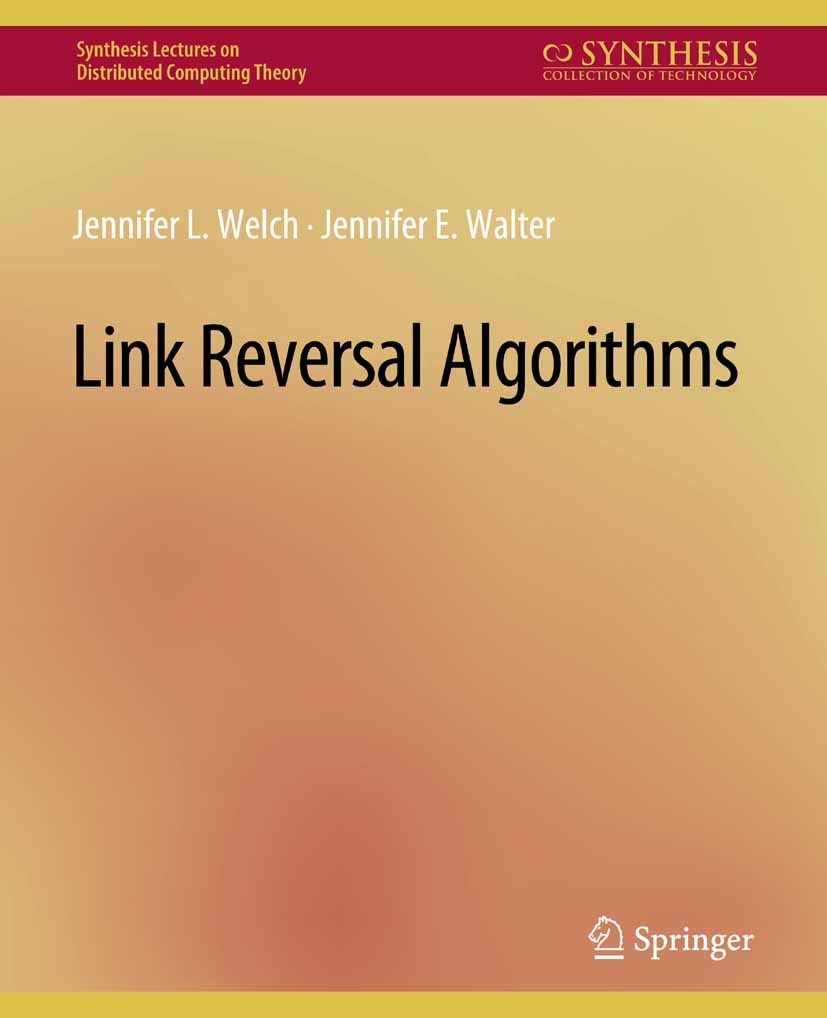| 书目名称 | Link Reversal Algorithms | | 编辑 | Jennifer L. Welch,Jennifer E. Walter | | 视频video | http://file.papertrans.cn/587/586745/586745.mp4 | | 丛书名称 | Synthesis Lectures on Distributed Computing Theory | | 图书封面 |  | | 描述 | Link reversal is a versatile algorithm design technique that has been used in numerous distributed algorithms for a variety of problems. The common thread in these algorithms is that the distributed system is viewed as a graph, with vertices representing the computing nodes and edges representing some other feature of the system (for instance, point-to-point communication channels or a conflict relationship). Each algorithm assigns a virtual direction to the edges of the graph, producing a directed version of the original graph. As the algorithm proceeds, the virtual directions of some of the links in the graph change in order to accomplish some algorithm-specific goal. The criterion for changing link directions is based on information that is local to a node (such as the node having no outgoing links) and thus this approach scales well, a feature that is desirable for distributed algorithms. This monograph presents, in a tutorial way, a representative sampling of the work on link-reversal-based distributed algorithms. The algorithms considered solve routing, leader election, mutual exclusion, distributed queueing, scheduling, and resource allocation. The algorithms can be roughly | | 出版日期 | Book 2012 | | 版次 | 1 | | doi | https://doi.org/10.1007/978-3-031-02006-3 | | isbn_softcover | 978-3-031-00878-8 | | isbn_ebook | 978-3-031-02006-3Series ISSN 2155-1626 Series E-ISSN 2155-1634 | | issn_series | 2155-1626 | | copyright | Springer Nature Switzerland AG 2012 |
The information of publication is updating

|
|
 |Archiver|手机版|小黑屋|
派博传思国际
( 京公网安备110108008328)
GMT+8, 2025-11-12 06:58
|Archiver|手机版|小黑屋|
派博传思国际
( 京公网安备110108008328)
GMT+8, 2025-11-12 06:58


